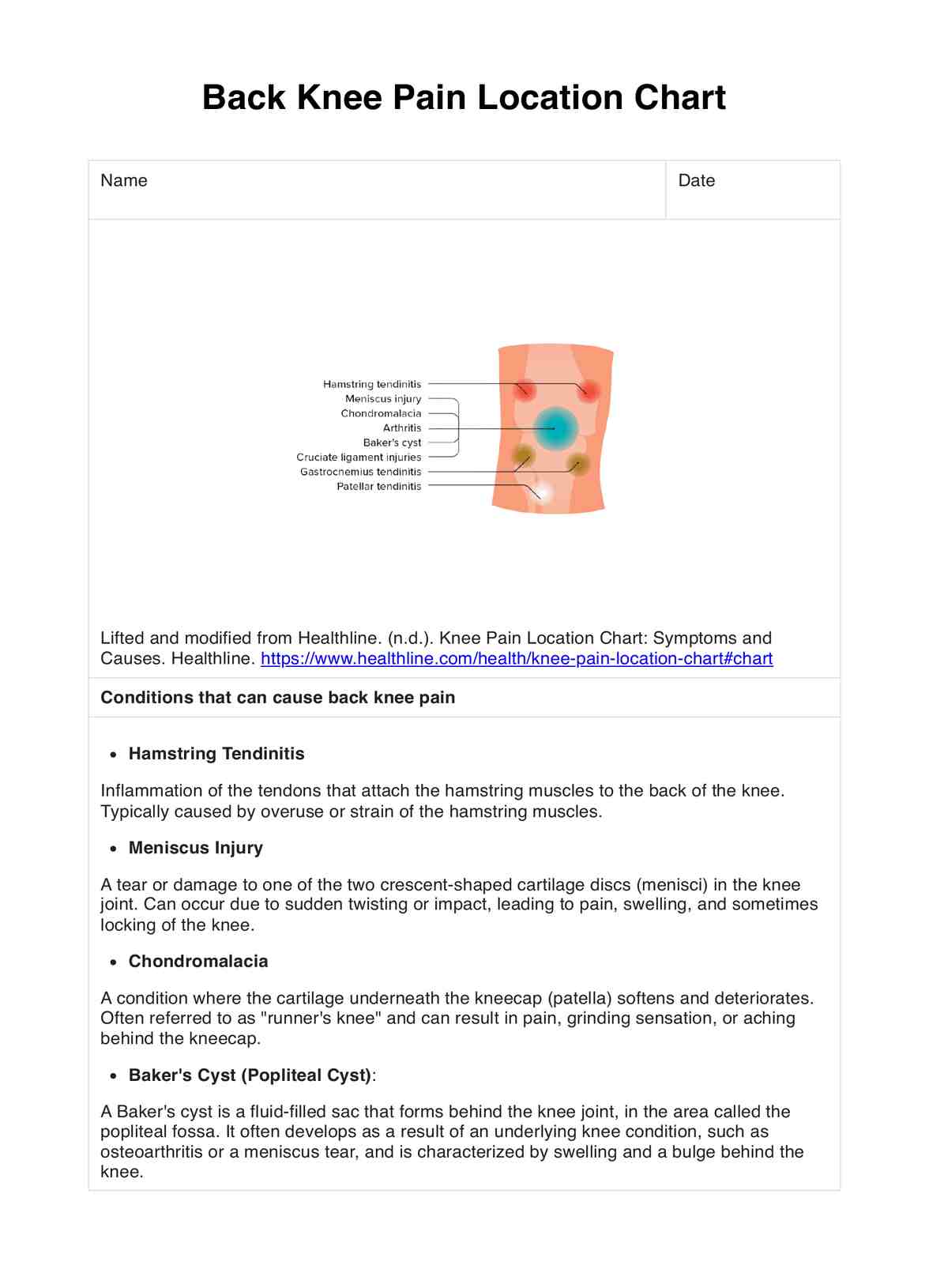Healthcare professionals like doctors, physical therapists, and nurses often use Knee Pain Location Charts to help diagnose and treat knee pain.

Discover how to use our free Back Knee Pain Location Chart to help identify the source of your patient's knee pain. Download our free PDF and sample now.
Healthcare professionals like doctors, physical therapists, and nurses often use Knee Pain Location Charts to help diagnose and treat knee pain.
You can use Back Knee Pain Location Charts at any stage of the treatment process, from initial diagnosis to ongoing monitoring. It can also track changes in a patient’s condition over time and inform referrals to specialists if necessary.
The Back Knee Pain Location Chart can help a person identify the source and severity of their knee pain. Additionally, it can be used to track changes in a patient’s condition over time—both with treatment and without—so that healthcare professionals can better understand the progression of the patient's disease.
EHR and practice management software
*No credit card required
Free
$0/usd
Unlimited clients
Telehealth
1GB of storage
Client portal text
Automated billing and online payments